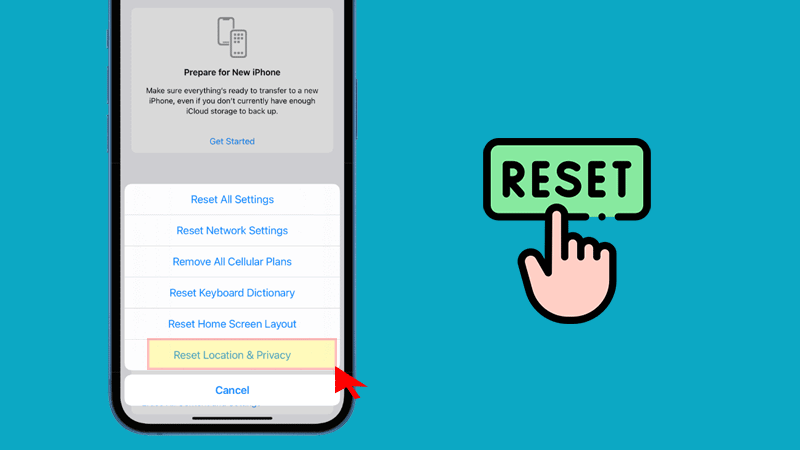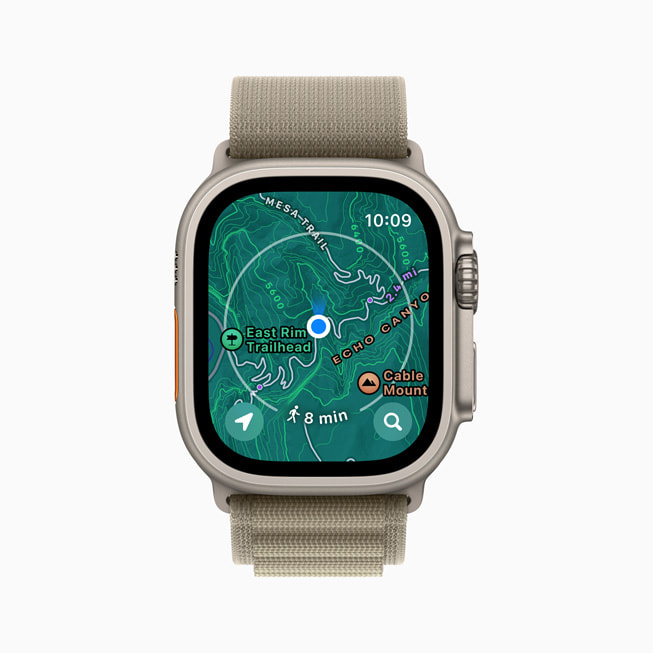In the ever-expanding universe of Apple products, convenience is king. Your iPhone seamlessly hands off a webpage to your iPad, your Apple Watch unlocks your Mac, and your AirPods instantly switch between devices. This intricate dance, a hallmark of the Apple experience, is often powered by a constant stream of data. Among the most personal and powerful types of data is your location. While this information fuels helpful features like predictive traffic alerts and personalized photo memories, recent iPhone news has highlighted a growing user awareness and concern over how, when, and why this data is collected. Understanding the mechanisms behind location tracking is the first step toward taking control.
This comprehensive guide will demystify Apple’s approach to location services, focusing on the much-discussed “Significant Locations” feature. We will explore not just the iPhone, but the entire connected web of devices that make up the modern Apple ecosystem. From the historical simplicity of an iPod Classic to the complex spatial awareness of the Apple Vision Pro, we will provide actionable insights and best practices to help you navigate the critical balance between seamless functionality and personal privacy. This isn’t just about flipping a switch; it’s about developing a privacy-first mindset for all your Apple devices.
What is “Significant Locations” and Why Does it Exist?
At the heart of the conversation around location data on iOS is a feature called Significant Locations. Buried deep within the privacy settings, this feature keeps a detailed, on-device log of places you visit frequently. For many users, discovering this list of addresses, complete with maps and visit dates, can be unsettling. However, Apple’s intention is not surveillance but personalization. Understanding the “why” behind the feature is crucial before deciding whether to disable it.
The Technology Behind the Feature
Significant Locations is designed to help your iPhone, iPad, and other connected devices learn the places that are important to you. By recognizing your home, workplace, or a favorite coffee shop, the system can offer proactive and context-aware suggestions. According to Apple, this data is end-to-end encrypted and cannot be read by the company, a cornerstone of the ongoing Apple privacy news narrative. The processing happens on your device, ensuring that a log of your movements isn’t sitting on a remote server accessible to third parties. This feature is a prime example of Apple’s broader strategy of “differential privacy,” where data is collected and analyzed in a way that protects individual identities.
How It Impacts Your Daily Experience
The data from Significant Locations feeds into numerous parts of the Apple ecosystem, often in subtle ways. When you get in your car in the morning and your iPhone’s Lock Screen suggests the travel time to your office, that’s Significant Locations at work. When the Photos app automatically curates a “Memory” album from your weekend trip, it’s using this location data to group photos. The latest Siri news often points to a more intelligent and proactive assistant, and that intelligence is partly fueled by understanding your routines and locations. This extends to other devices as well; your Apple Watch might use this data to better understand your workout locations, contributing to more accurate Apple health news and fitness tracking metrics. The convenience is undeniable, but it’s built upon a foundation of your personal location history.
A Practical Guide to Managing Your Location Data
Knowledge is power, and in the world of digital privacy, that power comes from knowing where to find the right settings. Apple provides a surprisingly granular set of controls for managing location data. Taking a few minutes to conduct a privacy audit can give you peace of mind and ensure your data is only being used in ways you’re comfortable with. This is a recurring theme in iOS updates news, as Apple continues to add more layers of user control with each major release.

Disabling or Clearing Significant Locations on iPhone and iPad
If you’re uncomfortable with your device logging your frequently visited places, you can view, clear, and disable the feature entirely. Here’s the step-by-step process:
- Navigate to Settings > Privacy & Security.
- Tap on Location Services.
- Scroll all the way to the bottom and tap on System Services.
- Select Significant Locations. You will likely need to authenticate with Face ID, Touch ID, or your passcode.
- Here, you can see a summary of records. You can tap on individual records to see more detail.
- To remove the history, scroll to the bottom and tap Clear History.
- To disable the feature completely, toggle the Significant Locations switch at the top to the off position.
Consideration: Disabling this will impact personalized features like predictive traffic routing and some types of Photo Memories. It’s a direct trade-off between privacy and convenience.
Beyond Significant Locations: Granular Location Controls
Your control doesn’t end with Significant Locations. The main Location Services menu is your central hub for managing which apps can access your location and when. You’ll generally see four options for each app:
- Never: The app can never access your location data.
- Ask Next Time Or When I Share: The app must prompt you each time it wants your location.
- While Using the App: The app can only access your location when it is open and on-screen.
- Always: The app can access your location even when it’s running in the background. This setting should be granted with extreme caution.
Furthermore, look for the Precise Location toggle. Many apps, like a weather or news app, only need your general area, not your exact coordinates. Disabling “Precise Location” provides them with an approximate location, protecting your specific address. This is a key piece of iOS security news that empowers users to minimize data exposure without losing all functionality.
System Services: The Hidden Location Users
Within the “System Services” menu lies a long list of background processes that use your location. While many are essential, some can be disabled to further reduce tracking. Critical services like “Emergency Calls & SOS” and “Find My iPhone” should always remain enabled for your safety and security. However, others like “Location-Based Alerts” or “Apple Pay Merchant Identification” can often be turned off with minimal impact on your daily experience. Reviewing this list periodically is a best practice for any privacy-conscious user.
Location Privacy Across the Apple Ecosystem
Your location data isn’t confined to your iPhone. It’s a thread that weaves through the entire Apple ecosystem, from wearable accessories to smart home devices and the next generation of computing. Understanding how this data is handled across all your products is essential for a holistic privacy strategy.
Find My Network: AirTags, AirPods, and Your Devices

The Find My network is a privacy-centric marvel. When you get the latest AirPods Pro news about new tracking features, it’s this network that powers them. It leverages a vast, crowdsourced network of hundreds of millions of Apple devices to help you locate a lost item. Whether it’s your misplaced iPhone, a missing pair of AirPods Max, or a backpack with an AirTag, the system works by detecting Bluetooth signals from nearby devices. This communication is end-to-end encrypted and anonymous, so not even Apple or the owner of the device that found your item knows its location. Recent AirTag news has focused on Apple’s efforts to prevent misuse by introducing anti-stalking alerts, demonstrating the company’s ongoing commitment to balancing utility with security. This stands in stark contrast to the simple, offline nature of devices from the past, where the biggest worry in iPod Shuffle news might have been its small storage capacity.
HomeKit and Location-Based Automation
Your location also plays a key role in your smart home. Devices like the HomePod mini or an Apple TV can act as a Home Hub, the central brain of your HomeKit setup. They enable location-based automations, such as turning on your lights and adjusting the thermostat when you’re arriving home. This “geofencing” is handled securely within the Apple ecosystem. Your location isn’t broadcast to smart accessory manufacturers; instead, your Home Hub securely communicates with your devices via iCloud to determine if you’ve crossed a virtual boundary. This privacy-preserving approach is a frequent highlight in HomePod news and a key differentiator in the smart home market.
The Future is Spatial: Apple Vision Pro and AR
The conversation around privacy is about to enter a new dimension with the advent of spatial computing. The most significant Apple Vision Pro news revolves around its ability to seamlessly blend digital content with the physical world. To do this, the device must constantly map and understand your surroundings in real-time. This presents an unprecedented privacy challenge. Apple’s approach, as with other products, is to process as much data as possible on the device itself. Features like Optic ID, which authenticates the user by scanning their iris, are designed to keep this highly sensitive biometric data locked within the device’s Secure Enclave. As Apple AR news continues to evolve, so will the privacy debate. The way accessories, from a potential Vision Pro wand to an updated Apple Pencil Vision Pro, interact with this spatial data will be a critical area of focus. Managing the privacy of a device that sees what you see is the next frontier in the Apple ecosystem news cycle.
Developing a Privacy-First Mindset
Ultimately, digital privacy isn’t about a single setting or a one-time fix; it’s an ongoing practice. As Apple introduces new devices and features, from new Apple accessories news to major iOS updates, your data footprint will change. Adopting a proactive and informed mindset is the best defense.
Actionable Tips for Everyday Use
- Audit Regularly: Once every few months, go through your Location Services settings. Remove permissions for apps you no longer use and question why each app needs your location.
- Embrace “While Using”: For most apps, the “While Using the App” setting is the best balance. Avoid granting “Always” access unless it’s absolutely critical (e.g., for a family safety app).
- Minimize Precision: Toggle off “Precise Location” for any app that doesn’t need your exact address to function, such as a local news or weather app.
- Be Wary of New Permissions: When a new app or iOS update asks for a new type of permission, take a moment to understand what you’re granting it access to.
- Clear History Periodically: If you choose to keep Significant Locations enabled for its benefits, consider clearing its history every few months as a matter of digital hygiene.
The Convenience vs. Privacy Trade-Off
It’s important to acknowledge that there is a real trade-off between absolute privacy and the seamless convenience that makes the Apple ecosystem so compelling. Disabling all location services will make your devices less “smart” and some features will cease to work. The goal is not to live in a state of digital paranoia but to make informed choices. Find a balance that aligns with your personal comfort level. Whether you’re curating an iPad vision board with personal photos or tracking a run with your Apple Watch, Apple’s architecture provides a stronger privacy foundation than many alternatives, but the final responsibility for managing that privacy rests with you.
Conclusion
The discovery that your iPhone is logging your movements can be jarring, but it opens the door to a more important conversation about digital privacy in the 21st century. Apple, more than many of its competitors, has built its ecosystem on a foundation of on-device processing and end-to-end encryption. It provides users with a robust toolkit to manage their data, but these tools are only effective when they are used. By understanding features like Significant Locations, auditing app permissions, and staying informed about how new devices like the Apple Vision Pro will handle data, you can transform from a passive user into an active guardian of your own digital life. As the world of Apple news continues to accelerate, the principles of proactive data management and informed consent will remain your most valuable assets in navigating the future of personal technology.











